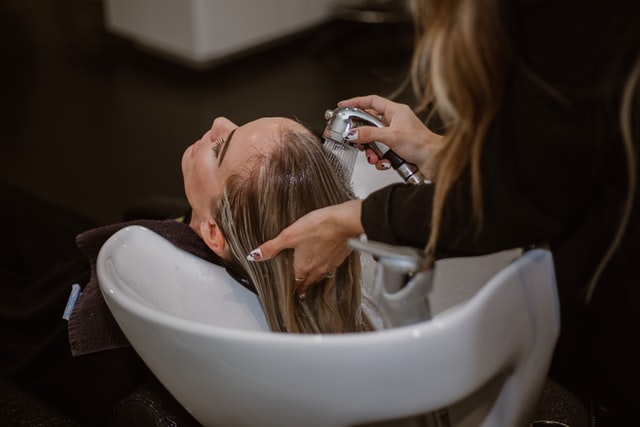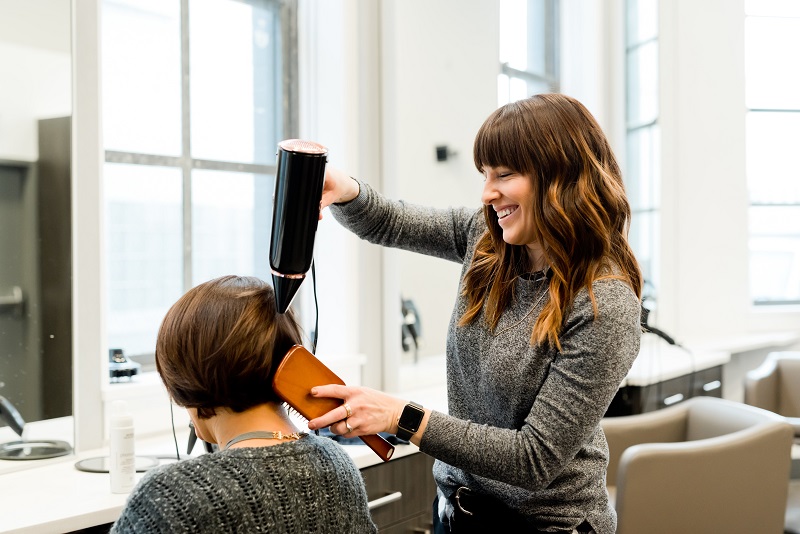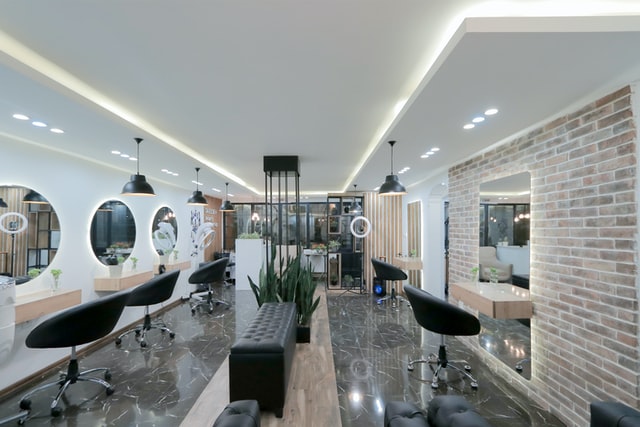
How to Start a Hair Salon Business – a Complete Guide
Planning to start a hair salon business in 2024?
Starting your own hair salon business can be a very profitable business opportunity.
While the hair salon industry, as well as the wellness industry in general, has been heavily affected by the global COVID-19 pandemic throughout 2020 and 2021, the industry has bounced back strongly throughout the latter half of 2021 and 2022, and it’s definitely a great time to start a new hair salon business.
It doesn’t necessarily mean you’ll get instant success as soon as you’ve started your salon, and you’ll still need the right planning and a lot of work. However, the journey itself can be a highly rewarding experience.
In this guide, we will share everything you need to know about opening a successful hair salon business, and by the end of this guide, you’d have learned about:
- What makes a good hair salon business
- Planning your tanning salon
- Handling the legalities of starting a salon
- Marketing ideas and strategies for your salon
- Creating a strong online presence for your hair salon business
And more.
Without further ado, let us begin.
What Makes a Good Hair Salon Business?
You can’t start a successful hair salon business if you don’t really know what makes a good salon business in the first place.
Also, it’s important to try to be in your clients’ shoes and understand what makes a great hair salon from clients’ perspectives.
Remember, prospective clients will only visit a hair salon that is good, credible, and trustworthy in their point of view.

Ultimately, satisfied clients can help promote your salon business to their peers via social media mentions, positive reviews, and recommendations, so meeting their expectations is very important.
Below are some key factors to consider in ensuring a great experience for your hair salon clients:
- Client-focused
Remember that a hair salon is ultimately a service business. Beyond giving your clients a haircut, hair spa, or other services they desire, focusing on clients is one of, if not the most important, characteristic of a great hair salon.
Always focus on making your clients feel special on every visit.
- Hygiene
It’s very important for a hair salon to always keep a high standard for cleanliness.
Your hair salon should look, smell, and feel clean at all times, and this includes regularly training your staff so they can keep a high standard of hygiene in various different aspects.

It’s also crucial to consider that maintaining hygiene in a hair salon can be challenging the smaller your salon is since the space will look cluttered. You may need to develop strategies and put a little more effort into regularly decluttering the space.
- Health and safety standards
While maintaining high health and safety standards has always been important for salons as a wellness business, it is even more important today in the post-COVID world, where more prospective clients are more concerned about it.
Always strive to ensure optimal safety for your clients: invest in high-quality sterilizing equipment, develop clear health and safety policies, and adequately train your staff.
Also, effectively communicate to your clients that you do care about their health and safety, for example, by integrating it into your marketing efforts.
- Professional staff and high-quality equipment
Your hair salon’s quality is only as good as your hairdressers, cosmetician, and other professionals working in your salon.
So, it’s very important to only hire qualified and professional staff.
Also, partner up only with certified and credible vendors and invest in high-quality equipment. Especially for critical equipment, make sure to purchase them from established and well-known brands.

While it’s true that lesser-known brands may produce decent (and more affordable) pieces of equipment, when your clients recognize the brand of your tools and equipment, it can improve your salon’s credibility.
- Maintain great two-way communication
One of the most important factors determining a salon’s success is its ability to communicate well with both clients and employees.
No matter how great your salon is (great decoration, state-of-the-art equipment, famous stylists, and so on) if your staff can’t communicate well with clients, these will all go to waste.

Implement a regular training program to ensure your staff can communicate well with your clients, especially for employees who will directly interact with clients (i.e., customer service, stylists, receptionists).
Make sure your staff is well-informed so they can explain all the steps of service provided to clients when needed and answer your client’s questions effectively.
This is not an exhaustive list, and there are definitely more factors that can play in determining your hair salon business’s success. However, these five are the most important, and you should focus on them as the foundation of success for your hair salon business.
Opening a Hair Salon Business: Step-By-Step Guide
Step 1: Planning your hair salon business
As the old saying goes, “good planning is half the battle.”
So, don’t underestimate the importance of figuring out the details before committing to anything.
We’d recommend starting the journey by writing a comprehensive business plan for your hair salon business, which will be especially useful if you are planning to secure outside funding for your salon.
However, even if you are going to fund the salon by yourself, having a well-written business plan will also be useful in providing a clear roadmap to success for your salon business.

Take your time to conduct proper research and write the business plan: the more comprehensive and detailed the business plan is, the better.
A typical hair salon business plan can follow this structure:
- Executive Summary
Often the most important section of the business plan, especially if you are trying to secure funding since this section will be the first (and often, only) section to be read.
The executive summary contains an overview of what the business plan is about and what’s included in it. This will be a summary of the other following sections in the business plan, so we’d recommend writing this section last once you’ve finished polishing the next sections.
An executive summary should include:
- The hair salon’s business vision and mission
- The purpose of starting the hair salon business
- What kinds of services will be provided in the hair salon (and their prices)
- What kinds of products will be sold in your salon
- Marketing plan
- Plans for growth and monetization
Keep the executive summary short and to the point, ideally 5-10% of the length of the whole business plan (i.e., if your business plan is 20 pages long, your executive summary shouldn’t be more than one page long.)
- Company Analysis
Also called company overview or business overview, this section should contain the basic details of your hair salon business, including but not limited to:
- Purpose
- Vision and mission
- Short term and long term goals
- Services and products offered (with price)
- Target audience
- Unique Value Proposition
This section should clearly elaborate on your business’s Unique Value Proposition (UVP): what makes your hair salon business unique from other hair salons in the area.
- Industry and Market Analysis
In this section, you should:
- Determine who your target clientele is
- Discuss the details of your salon’s primary target clientele: their demographic data, behavior, online activities, and so on.
- Identify direct and indirect competition in your area.
- Identify how your salon can offer a unique value proposition and create a competitive advantage.
You should also elaborate on how you are going to design and build your hair salon business based on the insights you’ve collected.
- Marketing, Sales, and Product plan
This section should cover how you plan to market and promote your hair salon business, including communicating the details of the services and products you are going to offer.

You should also discuss in detail the pricing strategy for your products and services and elaborate on your marketing strategy.
- Competitive Analysis
Discussing indirect and direct competitors of your hair salon business and elaborate detailed competitive analysis results.
- Management Team
This section should discuss your hair salon business’s organization and management strategy. List your leaders with their qualifications, and describe their responsibilities.
You may also want to include the legal structure of your hair salon business.
- Operations Strategy
This section should discuss in detail how you plan to run your salon business, like:
- Your opening hours
- Your location(s)
- How do you plan to expand the business over time?
- What kind of employees will the business need?
- Design and Development Plans
Your hair salon business’s concept. Elaborate on why you choose this specific design and how you are going to turn this concept into reality.

- Financial Plan
The financial plan section should discuss the development of your hair salon business’s revenue and profitability model: how you plan to generate income and get paid from clients.
Also, elaborate on how much funding you’ll need to start the hair salon business and how the money is going to be spent. It should also include detailed explanations of the key financial assumptions used in developing the business plan.
- Appendix
You should include a full set of financial projections in the appendix. For a salon business as a brick and mortar business, you can also include technical drawings, as well as other documents like customer lists and extensive competitor analysis.
Step 2: Identify legal requirements
It’s crucial to research the legal aspects of opening a hair salon business before investing in anything so you won’t make the wrong choices.
You should research the following factors:
- Whether you (or your staff) are required to be certified/licensed before you can provide hair salon services in your area
- The exact steps for registering your hair salon business name and company with your local and state government
- Insurance requirements
- Other laws and regulations that may apply
Also, decide whether the hair salon business will be an LLC, sole proprietorship, or other types of legal entity.

We’d recommend not starting your salon business as a sole proprietorship so that in the event of legal repercussions and/or debts, you can protect your individual self since you are legally considered as a separate entity from your business.
Step 3: Decide the type of hair salon you’re going to open
Nowadays, you can actually choose between a wide variety of options when starting a hair salon business.
Will you be a standard hair salon offering hair cutting, coloring, and styling services? Or will you offer other services like nail treatments, facials, skin care treatments, and so on?
Will this be a mobile salon business (where you’ll visit your clients)? A modest brick-and-mortar salon? A luxury salon+spa setup?
You should base your concept on adequate market research and competitive analysis so that you can be sure that the type of salon and services you are going to offer can attract a sizable market.
The type of hair salon you are going to build and the services you are going to offer will dictate what kind of space and equipment you’ll need (which will also affect the amount of capital you’ll need). We’ll discuss these in the next steps.
Step 4: Finding an ideal space
Note: if you are starting a mobile salon, then you can skip this step. You may, however, need to find a large enough vehicle that can store and transport your equipment.
For a brick-and-mortar hair salon, however, the location of your space can literally be the most important factor in determining your salon’s success.

With that being said, here are some of the most important factors to consider when choosing a space for your hair salon business:
- Location, location, location: pretty obvious. Location is the most important factor when considering a space for any business. Check for available public transport, nearby competition, traffic, and other factors. You’d want a location that is located near enough to many of your target clientele and yet doesn’t have too much competition nearby.
- Size: you’d want a space large enough for your hair salon, with at least 40 inches between salon chairs to maintain convenience in traffic flow. The average salon size is 1,500 sq ft, which can be a good reference point for you. As a general rule of thumb, you’d want about 175 sq ft of space per stylist.
- Visibility: evaluate how visible the space is, for example, whether it’s visible from the road. Keep in mind that increased visibility is not always a good thing, and you may want to consider:
- Type of client: if your target clientele values privacy, a less visible location can be a better choice and may help make your salon more exclusive
- Marketing strategy: if your marketing relies on foot traffic, then you should choose a location that is more visible.
- Types of services you offer: if you offer exclusive, labor-intensive services and if a by-appointment model is preferred for the types of services you offer, then you may want to choose a more exclusive, less visible location.
- Surrounding business: businesses around your salon can help contribute to foot traffic. If, for example, the space is located near a busy restaurant, then the visitors of these restaurants can stumble upon your salon and may decide to visit.
- Regulations: evaluate location-specific regulations that are applicable to the space. You might want to visit the town hall or relevant organizations in your area to find out what regulations may impact the specific space. Keep in mind that if you are renting the space instead of purchasing, the building owner may impose their own restrictions and policies on top of the local regulations.
- Price: pretty self-explanatory. Spaces located in premium locations will obviously be more expensive, so it’s crucial to first identify a budget that works well for you (if you’ve completed your business plan beforehand, this shouldn’t be an issue).
Last but not least, when purchasing or renting your space, keep in mind that you still need to allocate a part of your available budget to fill your salon with furniture and equipment, so don’t overspend on venue rental or purchase.
Step 5: Planning your salon layout
When evaluating the available space, identify where your furniture and salon equipment will fit in the space.
Also, don’t forget to evaluate whether there’s enough storage space for unused equipment and assess potential installation issues.

A typical hair salon is divided into three key areas:
- Entrance or receptionist
- Work area (hair wash and cut/styling chairs)
- Services (storage, bathroom, etc.)
Divide the available space into these areas (and more) and clearly define the functions of each different area. Size the different areas based on standard provisions to ensure each area is convenient and comfortable. Don’t forget to always make sure your staff has enough space to operate in.
If you have an available budget, you may want to hire a professional designer and discuss the concept of your hair salon with them. These professionals can help you design a comfortable, aesthetically pleasing, and functional space for your hair salon business.
Step 6: Estimate your budget
As early as possible, you’ll need to estimate how much money you’ll need to start and run the hair salon business.
Decide how you’re going to fund the business. If you are planning to secure financing from outside investors, then clearly define a strategy on how you are going to pay back the investment. Similarly, if you are planning to get a loan, then figure out how you are going to pay back the loan.
Figure out:
- How much money you’ll need to start the business
- How much money you’ll need to maintain day-to-day operations (i.e., salary, supplies, utility bills, etc.)
- How much you’ll need to break even, and how long it will take
Step 7: Shopping for equipment and supplies
While you may need different types of equipment and supplies depending on the types of services you’re going to offer, you can use the checklist below to get started.
- Hairstyling equipment:
- Styling stations and chairs
- Booster seats
- Cutting and technical stools
- Carts and trolleys
- Highlighting foil
- Eye-Vac Electronic Dustpan
- Styling tools
- Hairdressing supplies:
- Brushes and combs
- Towels — regular or disposable
- Carts or trolleys
- Hot towel cabinets
- Styling tools
- Clippers
- Shears
- Shear care set
- Tail combs
- Cutting combs
- Round brushes
- Finishing brushes
- Styling brushes
- Paddle brushes
- Hairdryers
- Curling irons
- Straighteners
- Sectioning clips
- Towels
- Shaving razors
- Razor blades
- Color and processing storage
Step 8: Establish a strong team
Consider hiring for at least the following positions:
- Certified/licensed hairstylists
- Cosmeticians
- Spa manager
- cleaning staff
- Receptionist

Step 9: Building a strong digital presence
Having a strong online presence is crucial for success, and if you are not visible online, essentially, your target clientele doesn’t know you exist. Focus on building a strong online presence in four key areas:
- Professional website
With platforms like Wix and Squarespace, among others, it’s now very easy and affordable to build your own professional website, so there’s simply no reason not to have one.

Make sure your site is well-designed, mobile-friendly, loads fast, and contains all the important information about your spa, including available services and prices if applicable.
- Online booking and appointment
Today’s consumers simply expect reliable, easy-to-use online bookings, and you should also consider the fact that many would prefer to book your salon services outside business hours.
Integrating 24/7 online appointment scheduling software to your website, app, and Google Maps listing is crucial if you want to maximize bookings and grow your business.

Choose salon appointment scheduling software solution that supports Reserve With Google, so you can easily allow prospective clients to book your service from your Google Maps listing, as well as your website.
- Social media
In this social media age, it’s only obvious to promote your salon business on social media.
- Create and optimize profiles on relevant social media networks
- Create a social media marketing plan to invest in relevant paid social media advertising
- Reach out to relevant influencers so they can help promote your brand
- Run contests and giveaways
- Local SEO
Prospective clients will Google “salon near me”, “salon in (city name),” or other queries when they are looking to book a salon service.

If your salon doesn’t appear on the results for these queries, you are going to miss out on this sizable market. In short, you’ll need to optimize your presence on Google Maps, and you can do it by:
- Claiming and verifying your Google My Business listing
- Optimizing your listing, focus on providing complete and accurate information for your prospective clients
- Encourage (positive) reviews from your clients, mainly on Google Maps but also on relevant review sites
- Build local citations by listing your salon business on relevant online directories
Wrapping Up
Above, we have shared the most important steps you should take to start and run a successful hair salon business.
Also, it’s no secret that one of the key challenges in running a salon business is attracting new customers, as well as retaining existing ones.
Proper planning and careful execution are important if you really want to continuously attract new customers, retain existing clients, and grow your business.

